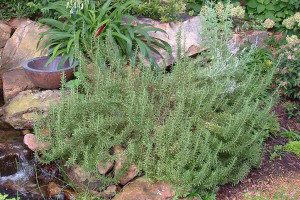
Landscaping Under the New Water Restrictions
 Dallas is experiencing its fourth drought since 2000. We went into Stage 1 water restrictions on December 12, 2011 and meteorologists are currently predicting that the drought will continue at least through the summer. Nearby areas such as Frisco and Plano are in Stage 3 water restrictions, that mandate watering no more than one time a week. It’s important to pay attention to lawn care needs during these water shortages.
Dallas is experiencing its fourth drought since 2000. We went into Stage 1 water restrictions on December 12, 2011 and meteorologists are currently predicting that the drought will continue at least through the summer. Nearby areas such as Frisco and Plano are in Stage 3 water restrictions, that mandate watering no more than one time a week. It’s important to pay attention to lawn care needs during these water shortages.
It seems to me that “the writing is on the wall” in that smart Dallasites will move toward landscaping designs that involve more drought-tolerant plants. Stage 1 water restrictions mandate that watering can be done twice a week but if drought conditions continue, restrictions could become more severe. Either way, many of the lawns and landscapes I see around Dallas simply aren’t “simpatico” with the concept of water conservation.
As a professional landscape designer, I understand the challenges this presents. The palette of drought-tolerant plants simply isn’t as broad, but there is still plenty to choose from. It is important to remember that just because a plant is native to Texas, doesn’t necessarily mean it is drought-tolerant and that the Southwest, Mexico, Australia, New Zealand, South Africa, Chili and the Mediterranean all are sources for beautiful plants that come from climates that are similar to ours. Among my personal favorites are native grasses, they are great for adding drama and focus to an environment. Other plants I love that are drought tolerant include rosemary, yuccas, agave and roses.
What can you do in the meantime to optimize the appearance of your landscape while moving toward a more drought-tolerant landscape? Here are some general tips:
- Water restrictions mandate that all watering take place between midnight and 10 a.m. and 6 p.m. and midnight. Because it stays hot into the evening in Dallas, it is better to water lawns during the early morning hours when temperatures and wind speed are at their lowest. This reduces evaporation and waste.
- Cycle soak. This allows the soil to absorb all that is applied, avoiding runoff. The length of the cycle will vary based on the conditions of the landscape, but you want to schedule several short cycles about an hour apart in order to allow the water to absorb to a depth of about 6-8 inches. This is the most important thing that we can all do to save water and improve the health of the plants. We have successfully kept many landscapes alive in Frisco when we were only allowed to water once a week in 100+ degree weather by cycling the water 3-5 times to get a deep soak without runoff. This also helps to promote deep foot growth where the soil stays much cooler.
- Raise the lawn mower blade to at least three inches, or to its highest level. A higher cut encourages grass roots to grow deeper, shades the root system and holds soil moisture.
- Avoid over fertilizing your lawn. Applying fertilizer increases the need for water. Apply fertilizers which contain slow release, water-insoluble forms of nitrogen.
- Install irrigation devices that are water efficient. Micro and drip irrigation and soaker hoses are examples. The most important thing is to make sure that your irrigation system is well-designed and operating properly.
The reality is that the current water restrictions are simply forcing us all to do something we should be doing anyway and that’s reducing the amount of water used in our landscapes though good water management practices. Maintenance becomes even easier when these best practices are combined with drought-tolerant plant choices. Do you have a favorite drought-tolerant plant? How well did your landscape survive last summer’s heat wave and our current drought? We’d love to hear from you.